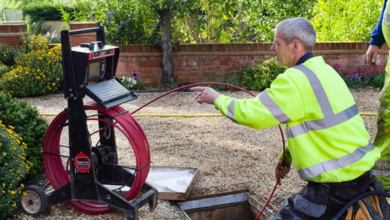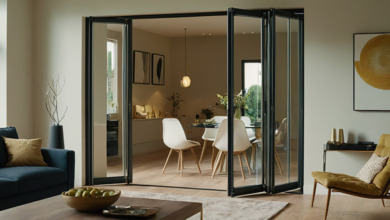The Perfect Fit: Finding the Right L-Shaped Bunk Bed for Your Space

When it comes to maximizing space in a bedroom or a shared living arrangement, few furniture pieces are as versatile and efficient as L-shaped bunk beds. These innovative designs not only provide comfortable sleeping arrangements but also make the most of the available floor area, making them ideal for children’s bedrooms, dormitories, or even guest rooms.
However, with a wide array of options available on the market, finding the perfect L-shaped bunk bed for your space can be a daunting task. In this comprehensive guide, we’ll explore the key considerations to keep in mind and provide valuable insights to help you make an informed decision.
Understanding L-Shaped Bunk Beds
Before delving into the specifics of choosing the right L-shaped bunk bed, it’s essential to understand what sets them apart from traditional bunk bed designs.
Unlike standard bunk beds that feature a single frame with one bed stacked over the other, L-shaped bunk beds are configured in an L-shape, with one bed positioned perpendicular to the other. L-shaped bunk beds’ unique layout offers several advantages, including increased floor space, improved accessibility, and enhanced aesthetic appeal.
Factors to Consider
- Room Dimensions and Layout
- The first step in selecting the perfect L-shaped bunk bed is assessing the dimensions and layout of the room where it will be placed. Measure the available floor space carefully, taking into account any obstacles such as doors, windows, or furniture. Additionally, consider the height of the ceiling to ensure that there is ample clearance for the top bunk.
- Number of Sleepers
- Another crucial factor to consider is the number of sleepers who will be using the bunk bed regularly. L-shaped bunk beds typically accommodate two sleepers, with one on each level. However, some models may feature additional trundle beds or storage drawers, providing versatility for accommodating guests or siblings.
- Age and Size of Users
- The age and size of the primary users should also influence your choice of L-shaped bunk bed. For younger children, opt for models with low-profile designs and safety features such as guardrails and sturdy ladders. For teenagers or adults, look for bunk beds with larger mattress sizes and weight-bearing capacities.
- Material and Construction
- The quality of construction and choice of materials play a significant role in the durability and stability of an L-shaped bunk bed. Common materials include wood, metal, and composite materials such as MDF or plywood. Each material has its unique characteristics in terms of strength, aesthetics, and maintenance requirements.
- Storage and Additional Features
- Many L-shaped bunk beds come with built-in storage solutions such as drawers, shelves, or built-in desks. Consider whether you need these additional features to optimize space and organization in the room. Keep in mind that while storage options can be convenient, they may also add bulk to the overall design.
Types of L-Shaped Bunk Beds
- Standard L-Shaped Bunk Beds
- Standard L-shaped bunk beds feature a traditional layout with one bed positioned perpendicular to the other. This design maximizes floor space and offers flexibility in placement within the room. It’s an excellent choice for smaller rooms or shared spaces where space efficiency is paramount.
- L-Shaped Loft Beds with Desks
- L-shaped loft beds combine sleeping and study areas into a single furniture piece, making them ideal for children or teenagers. The elevated bed provides ample space underneath for a built-in desk, bookshelves, or storage drawers, creating a dedicated workstation without sacrificing floor space.
- L-Shaped Bunk Beds with Trundle Beds
- For rooms that frequently accommodate guests or sleepovers, L-shaped bunk beds with trundle beds offer added versatility. The trundle bed is typically stored beneath the bottom bunk and can be pulled out when needed to provide an additional sleeping surface. This option is perfect for maximizing sleeping capacity without taking up extra space.
Read also: Sustainable Home Fragrance: Eco-Friendly Reed Sticks for Diffusers
Maintenance and Safety Tips
- Regular Inspection
- Periodically inspect the bunk bed for any signs of wear and tear, such as loose screws, cracked wood, or bent metal frames. Tighten any loose fittings and replace damaged parts promptly to ensure the structural integrity and safety of the bed.
- Follow Weight Limits
- Adhere to the weight limits specified by the manufacturer to prevent overloading and potential accidents. Avoid allowing more than the recommended number of sleepers on the top bunk and discourage rough play or jumping on the beds.
- Secure Ladders and Guardrails
- Ensure that ladders and guardrails are securely attached to the bunk bed frame to prevent falls or accidents. Teach children how to use the ladder safely and emphasize the importance of holding onto the guardrails when climbing or sleeping on the top bunk.
- Use Mattresses of Appropriate Size
- Choose mattresses that fit snugly within the bed frames and avoid using oversized or undersized mattresses that could pose a safety hazard. Ensure that the mattresses are of suitable firmness and thickness to provide adequate support and comfort for the sleepers.
Conclusion
In conclusion, L-shaped bunk beds offer an excellent solution for maximizing sleeping arrangements and optimizing space in shared living environments. By considering factors such as room dimensions, number of sleepers, age and size of users, material and construction, and additional features, you can find the perfect L-shaped bunk bed to suit your needs and preferences.
Remember to prioritize safety and maintenance to ensure the longevity and reliability of your bunk bed investment. With careful planning and attention to detail, you can transform any room into a functional and stylish living space with the addition of an L-shaped bunk bed.





